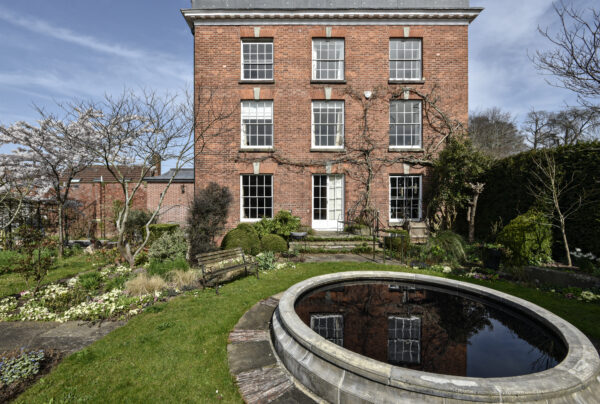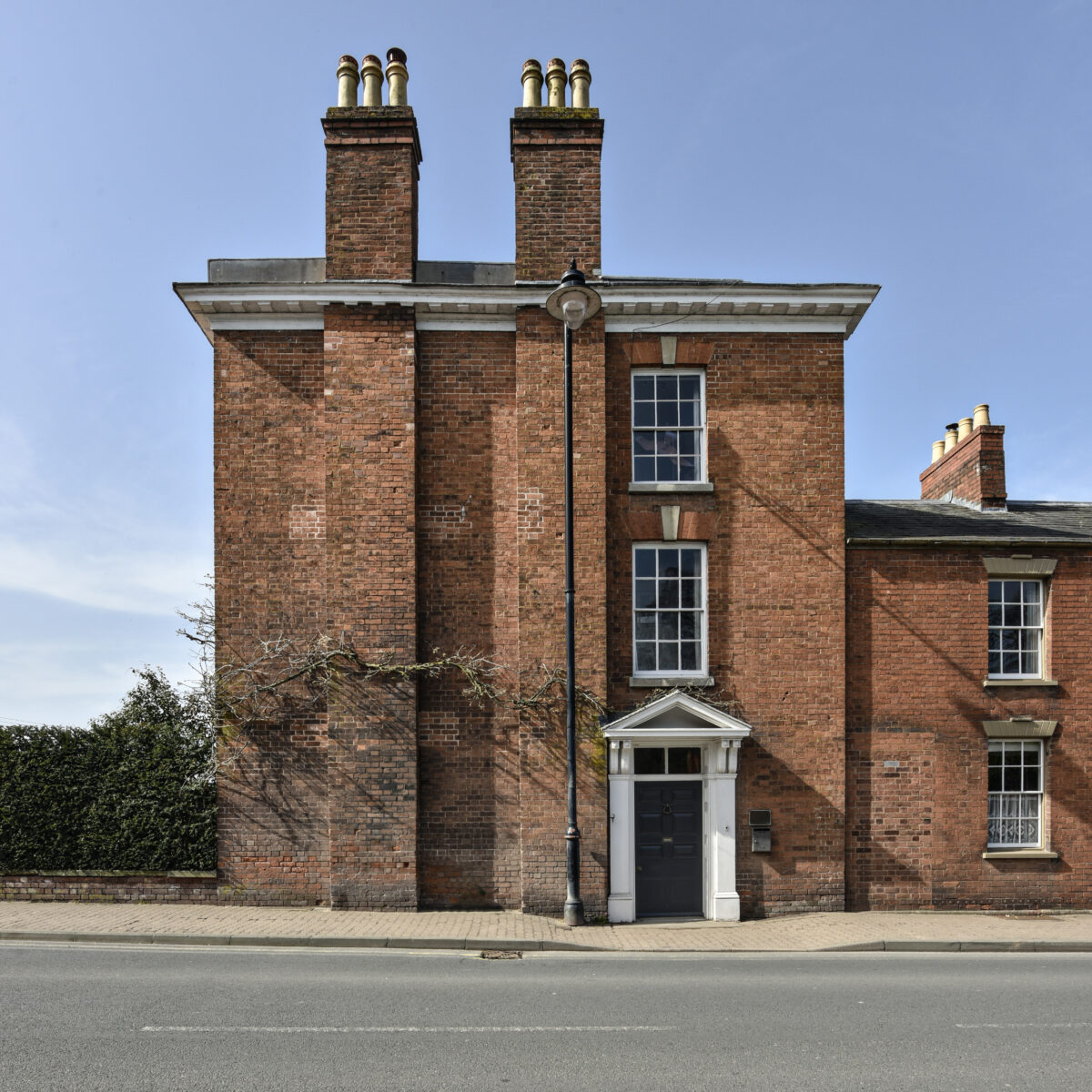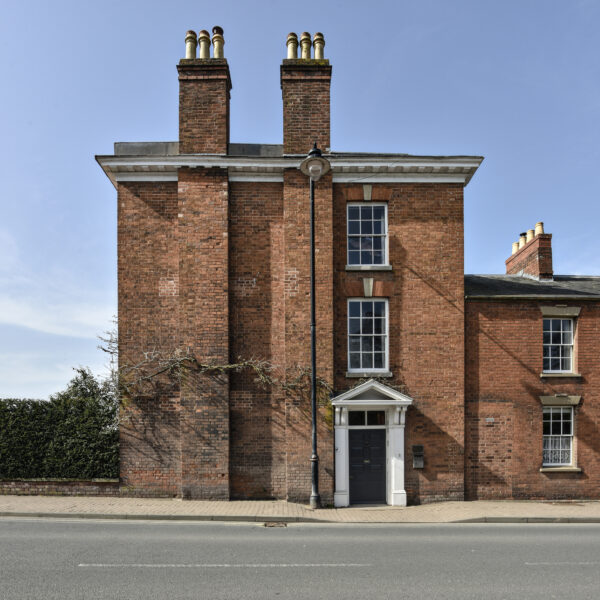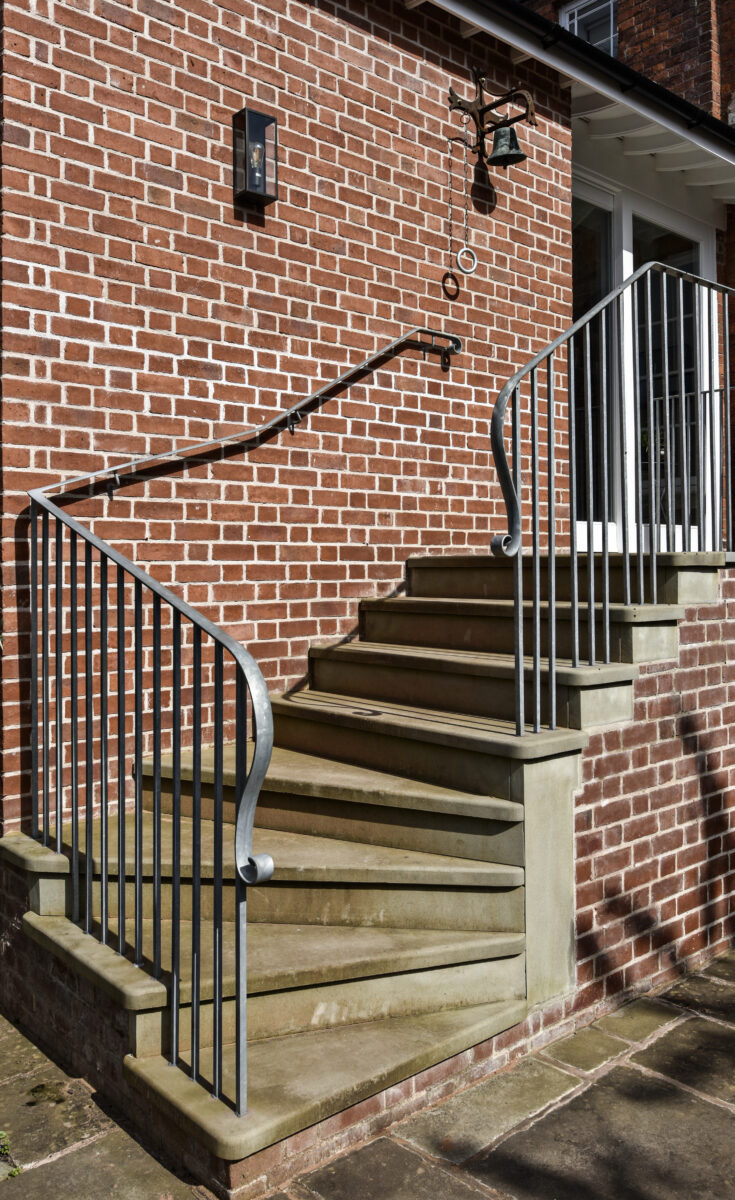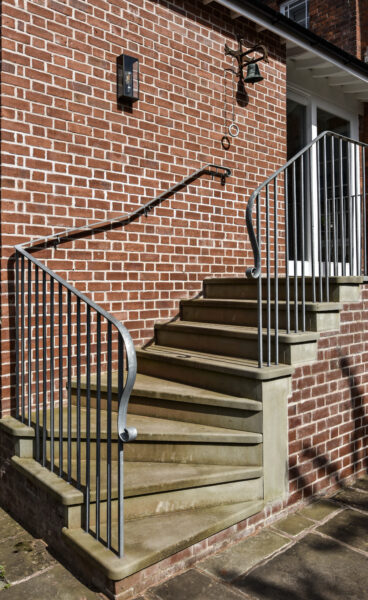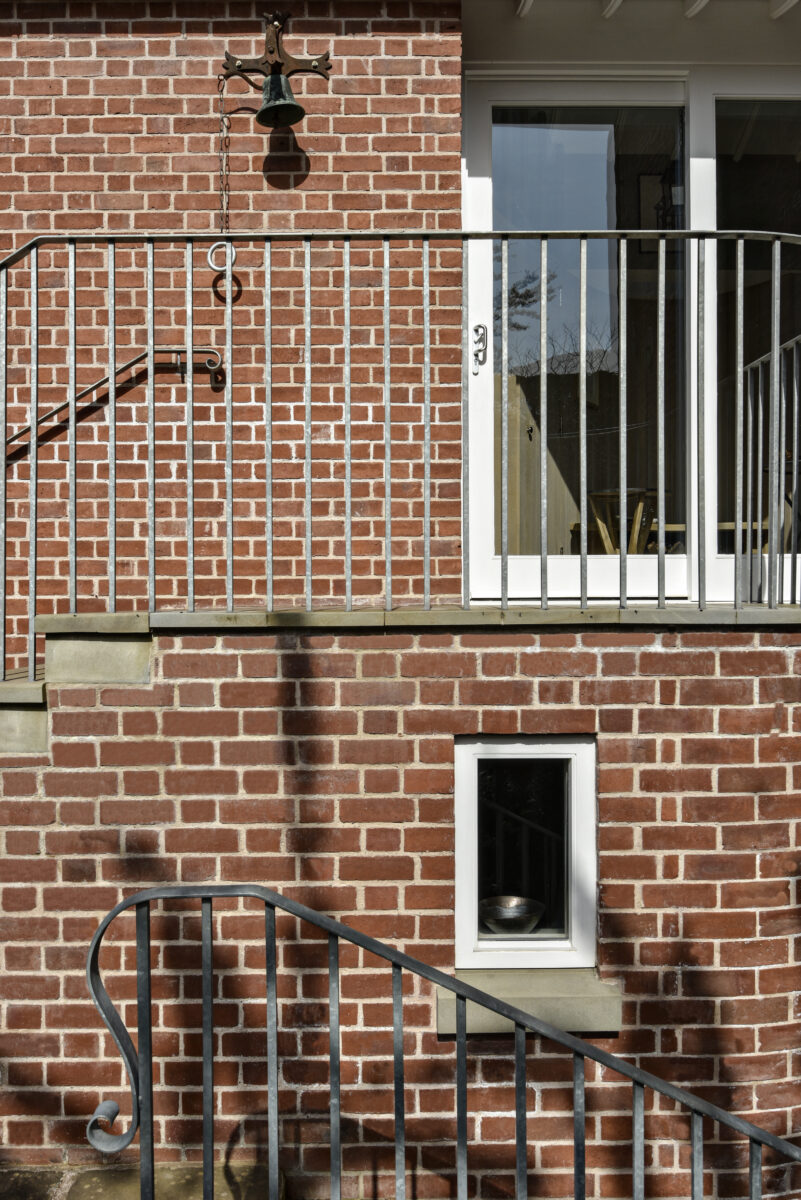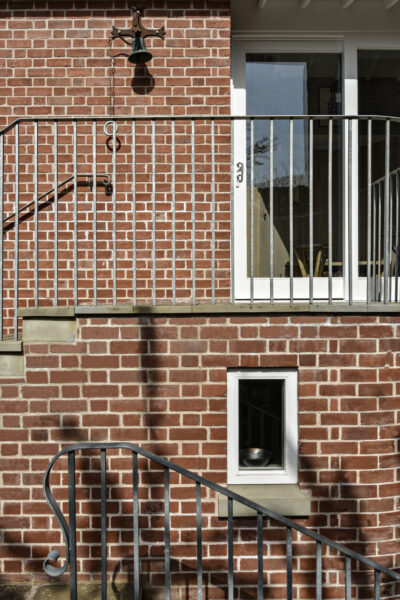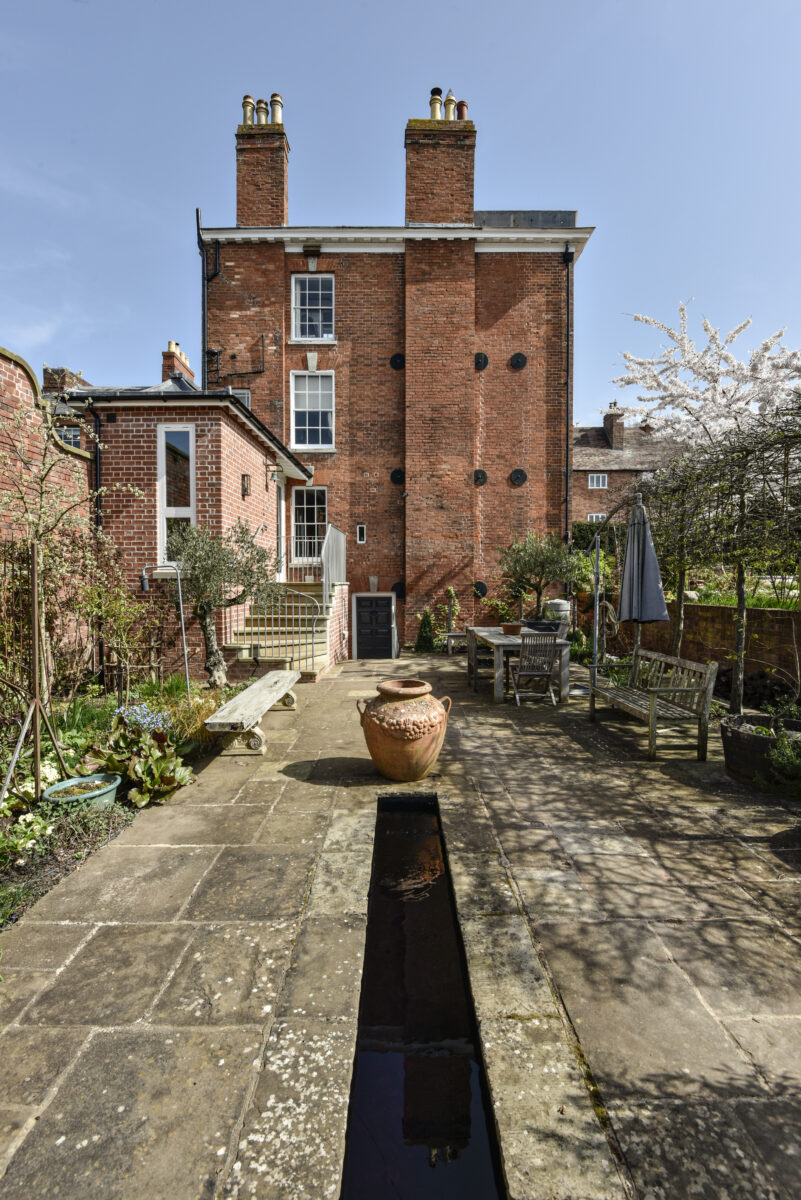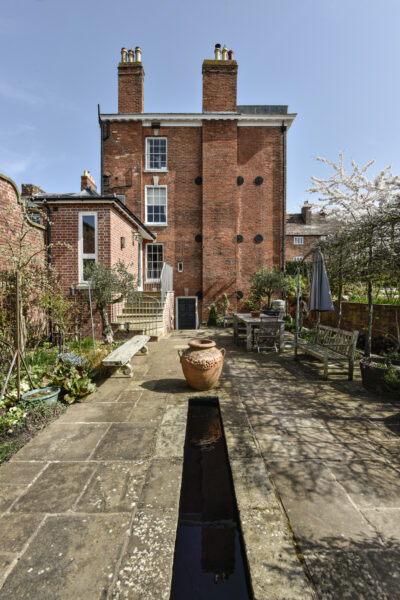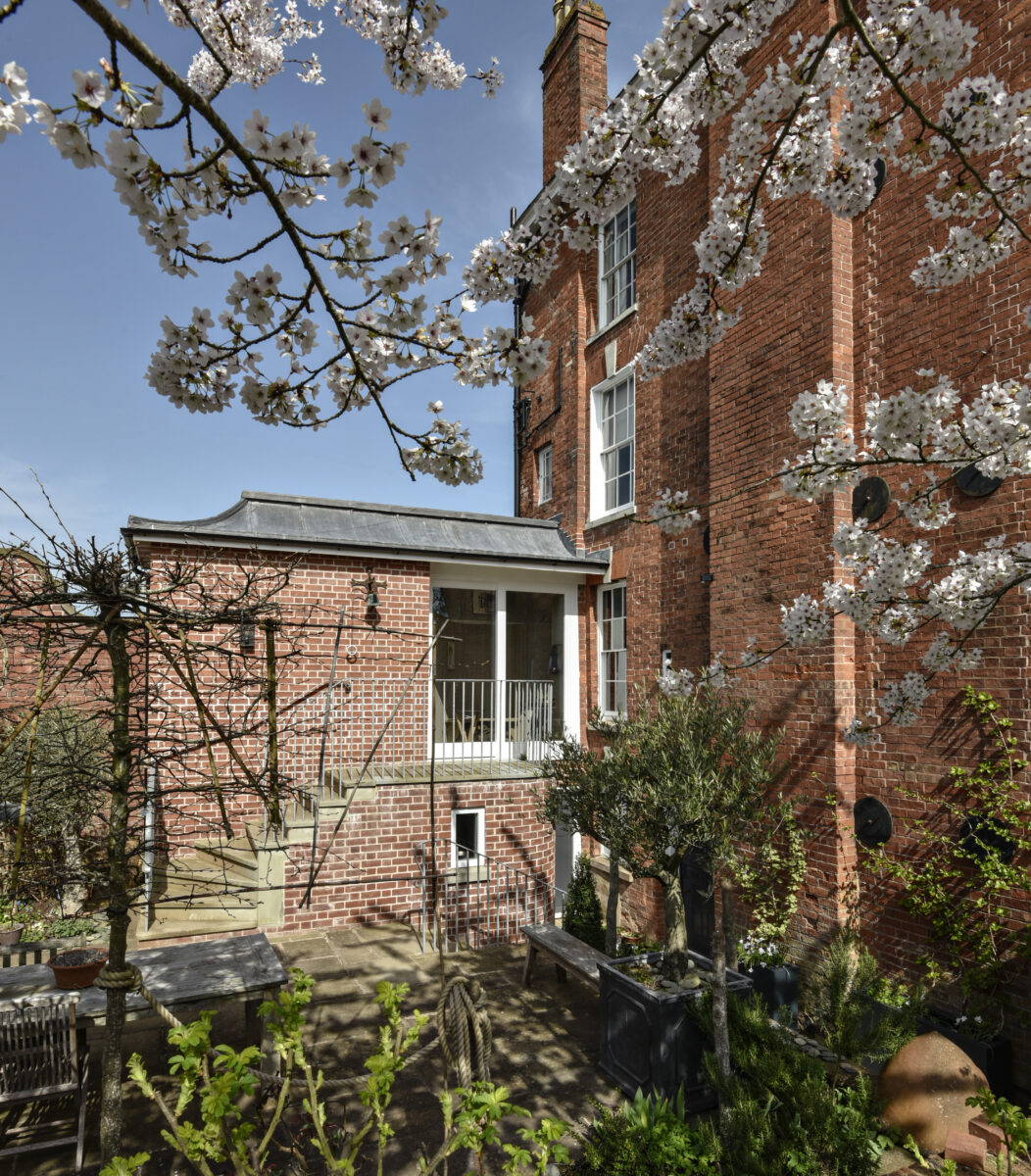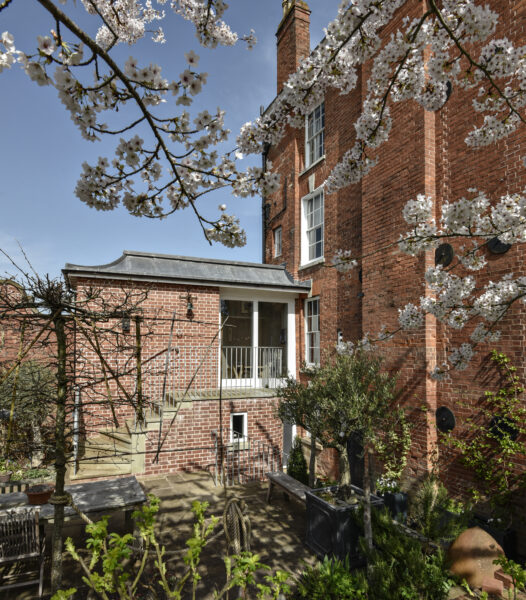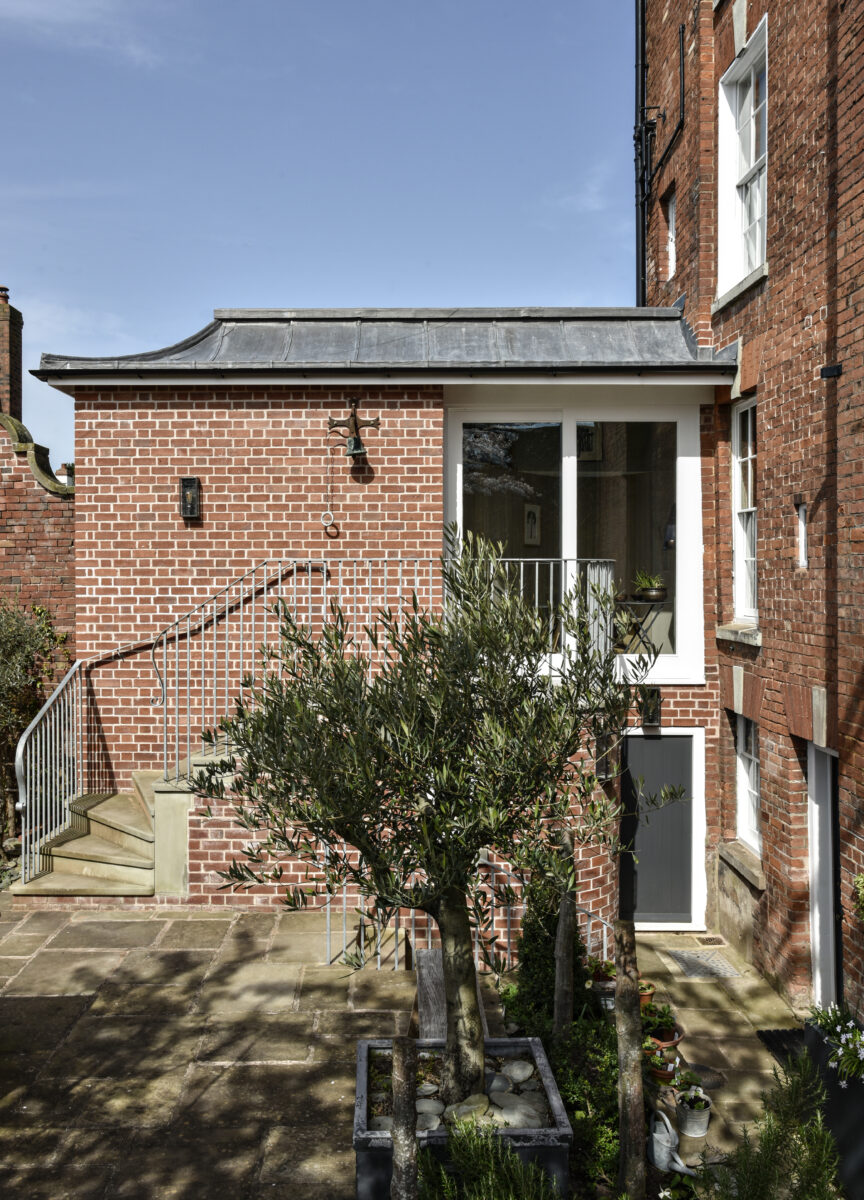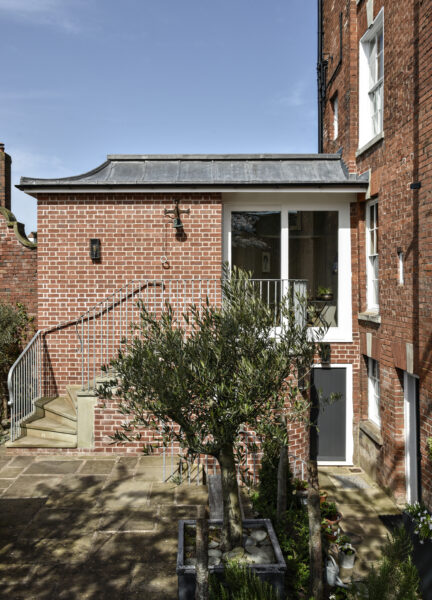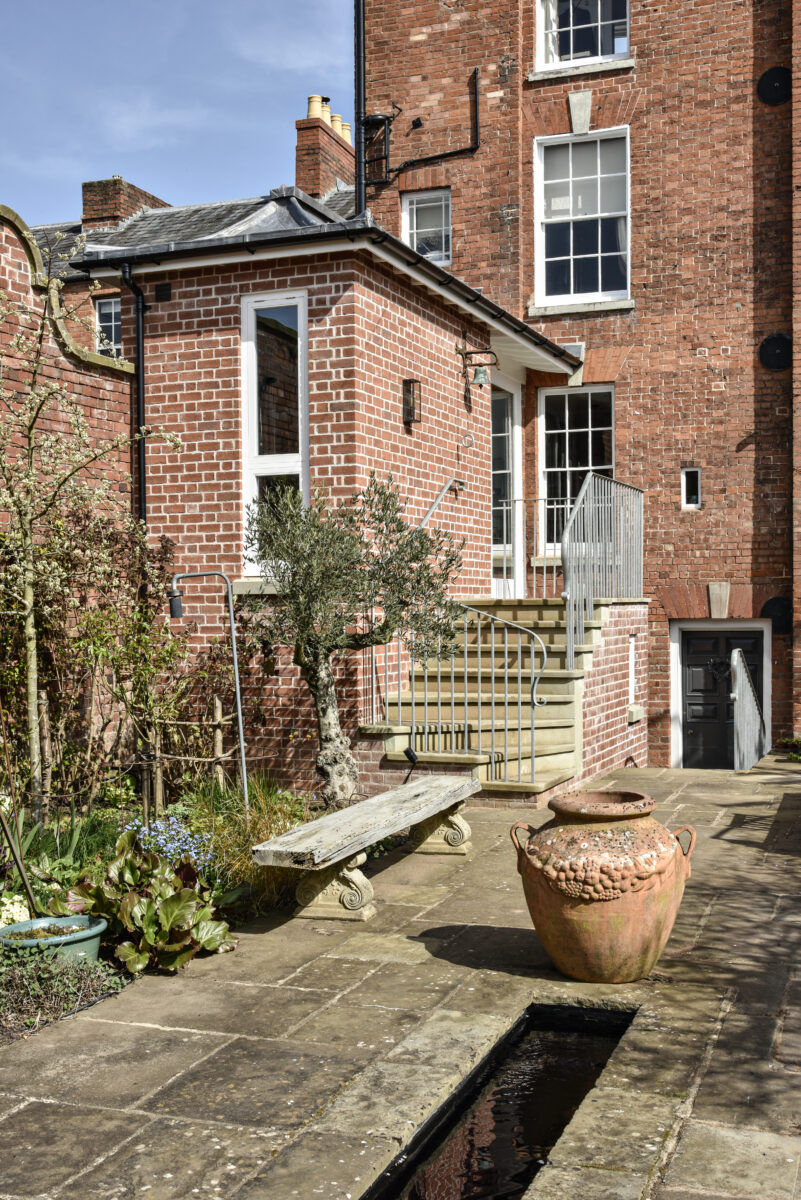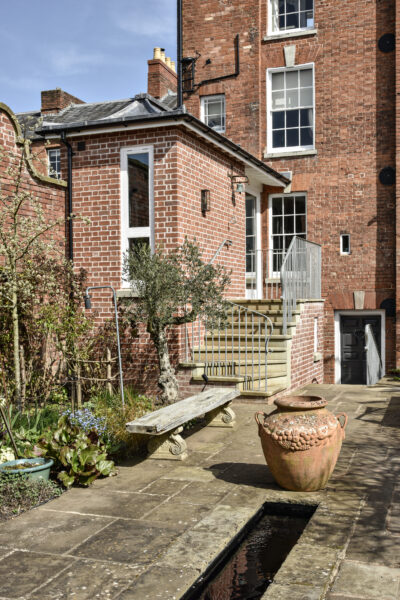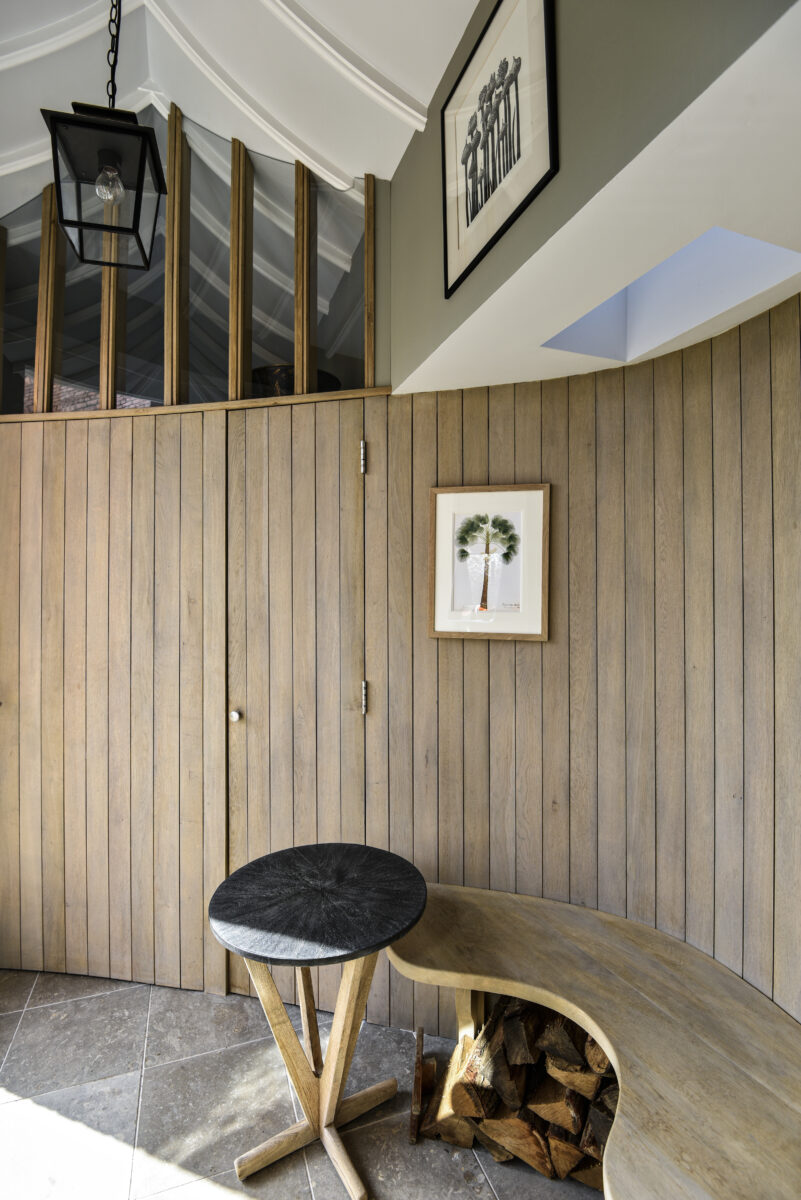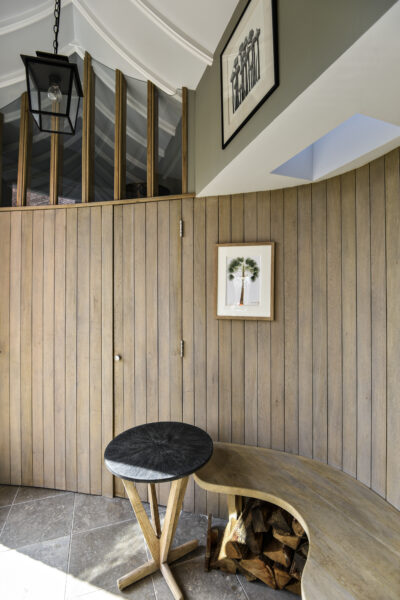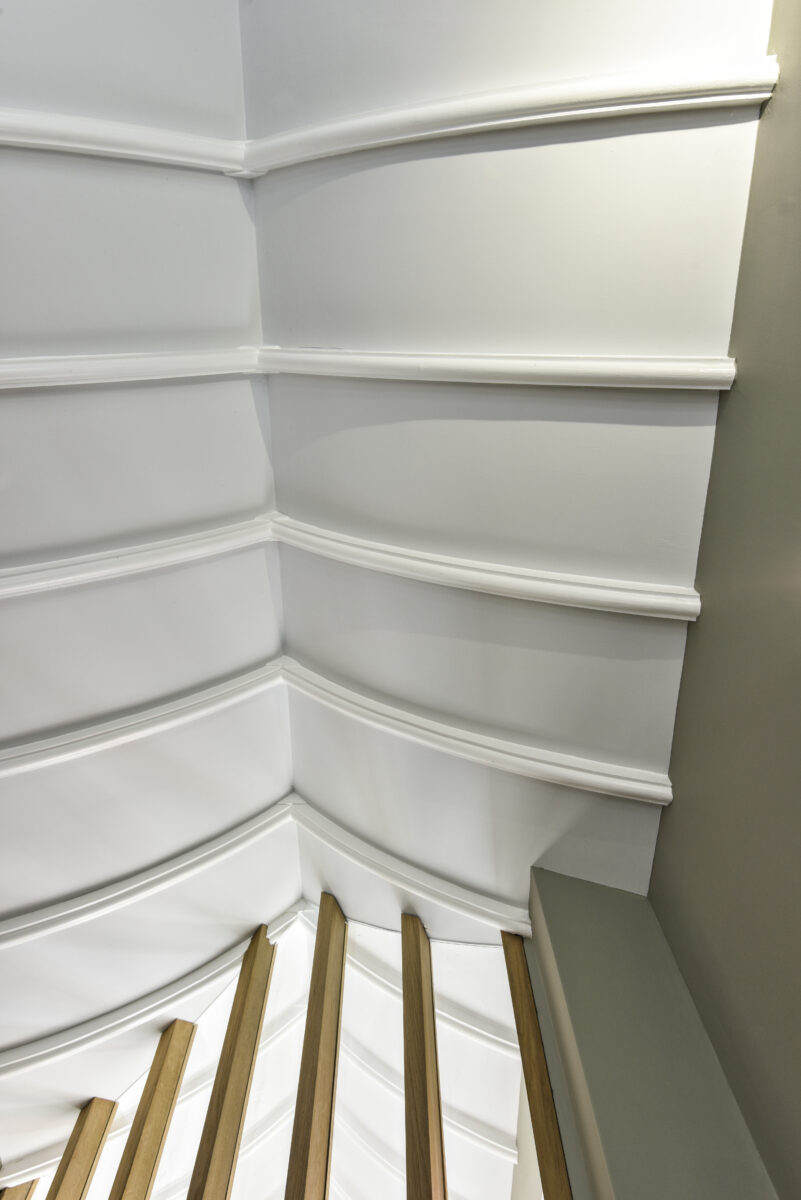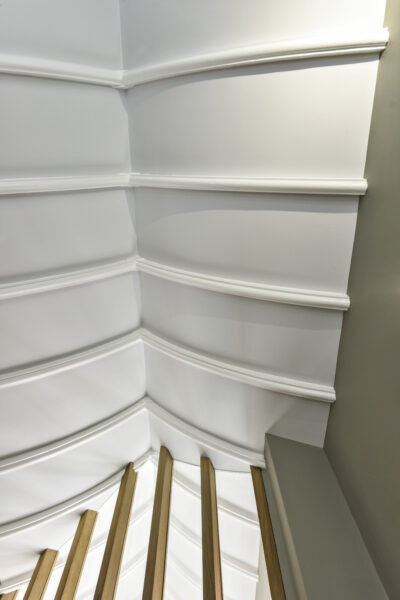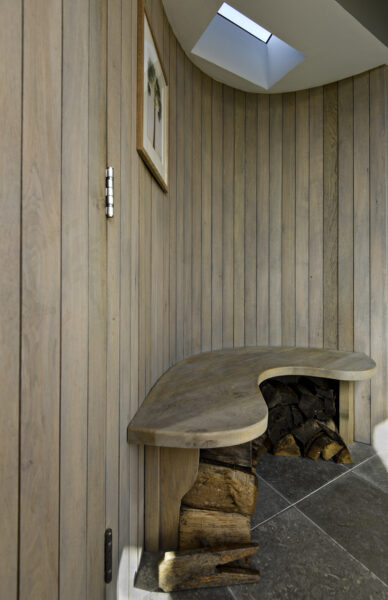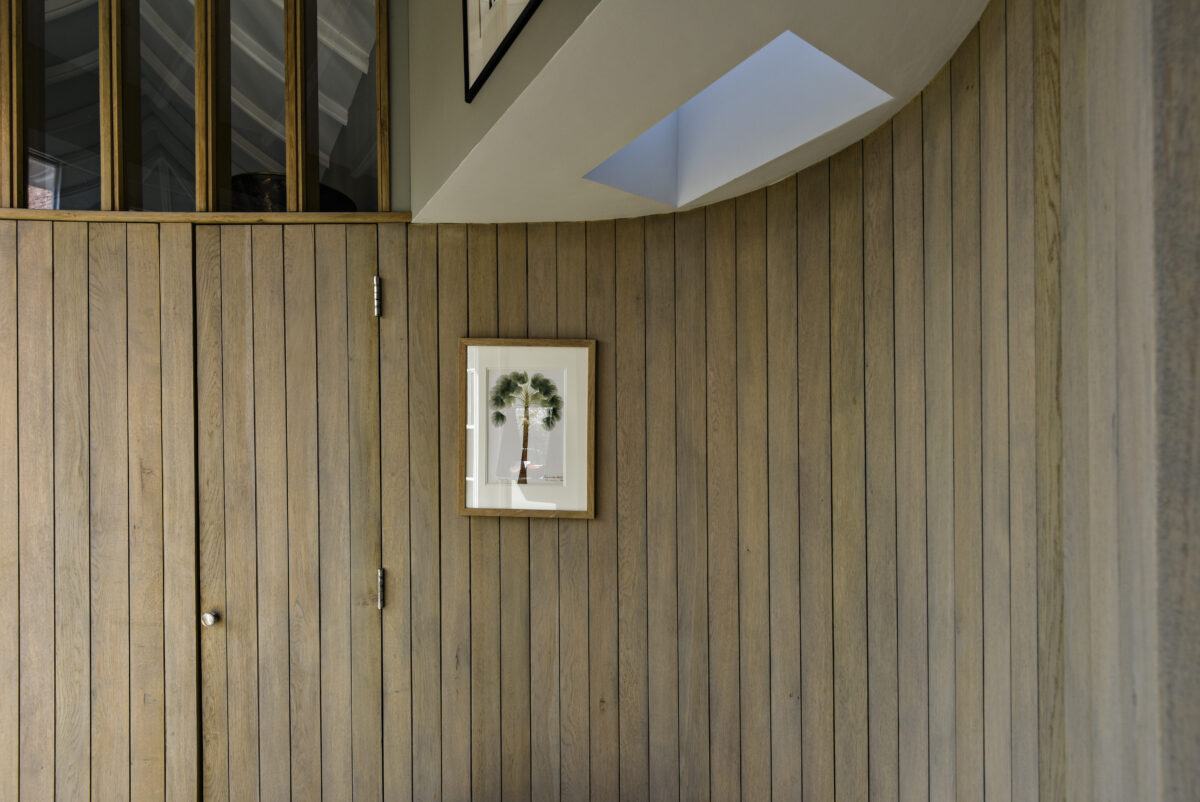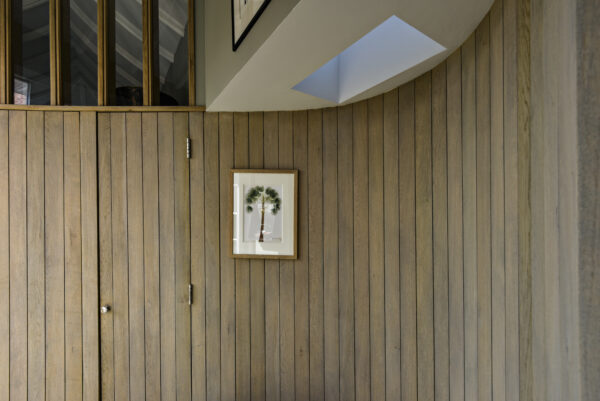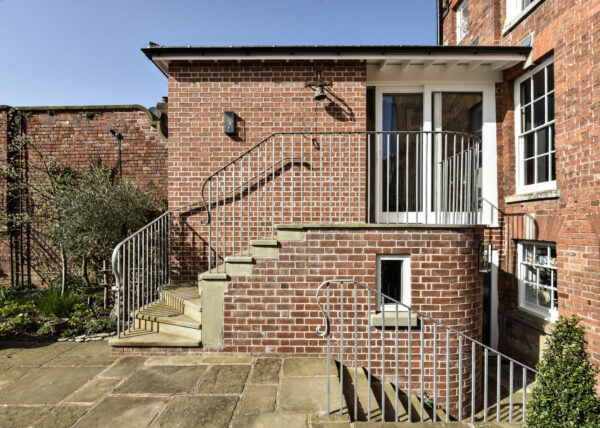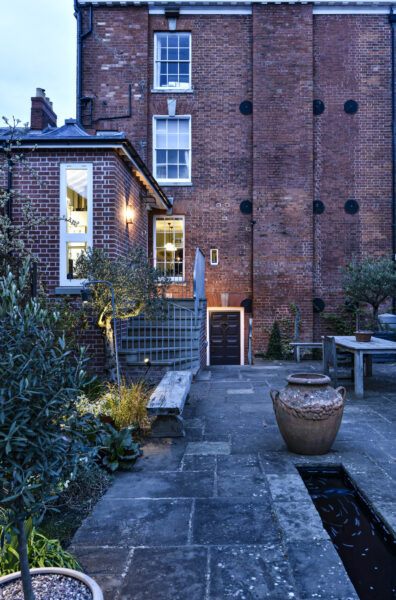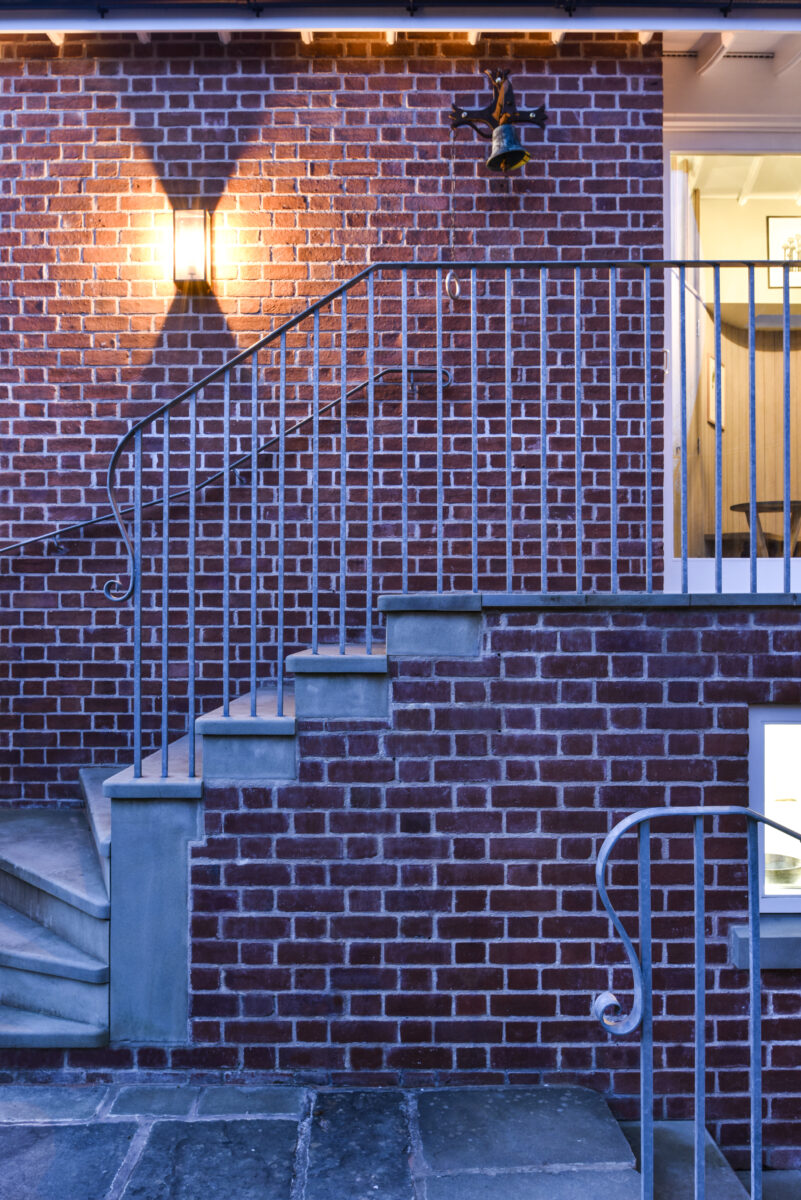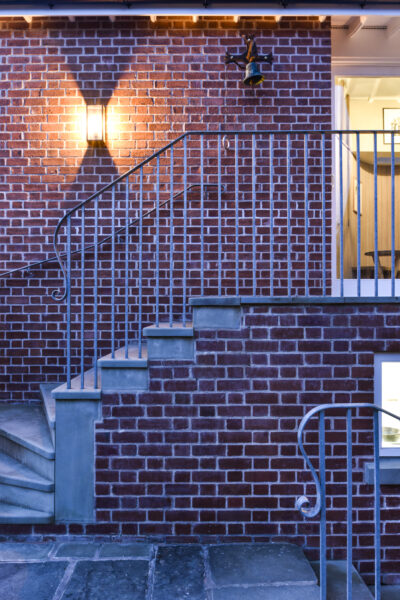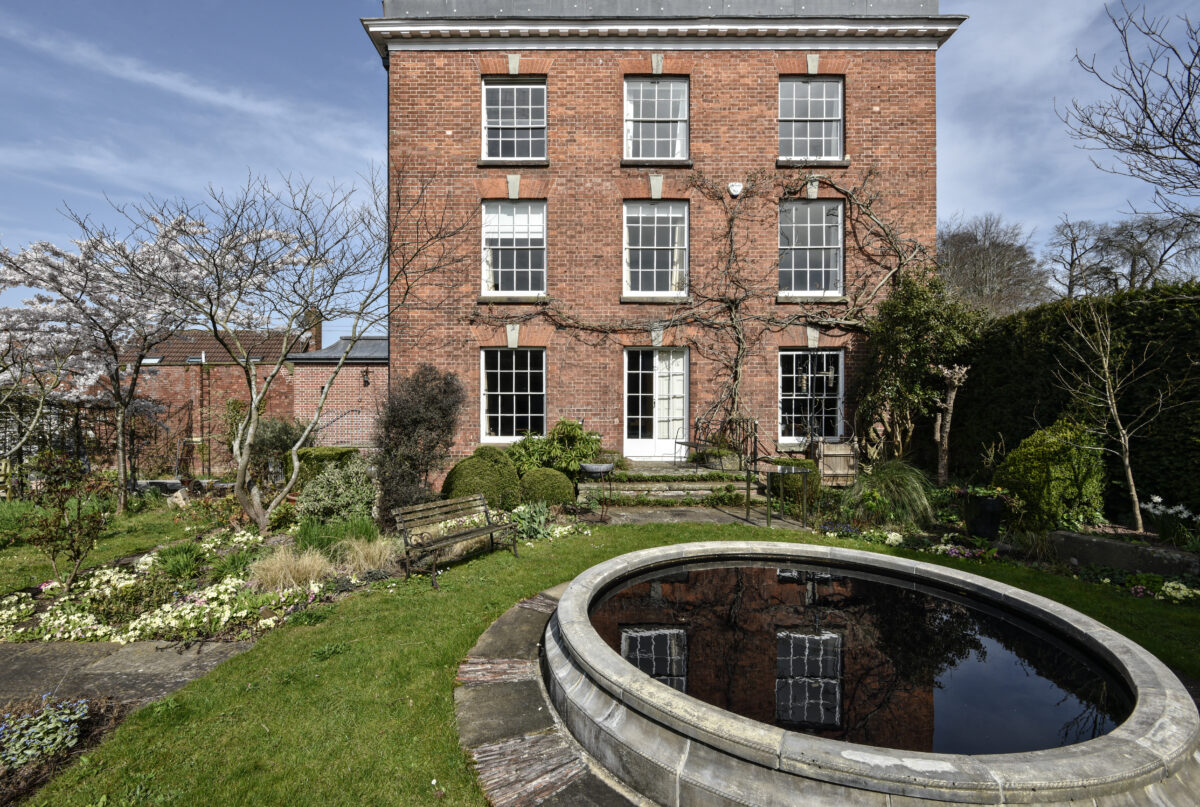 The Brief
The Brief
Our clients’ home is a beautiful Grade II Georgian building on the outskirts of the market town where they live.
As the owners of a landmark building, they regularly welcome guests to their home. They were conscious that they didn’t have a ground floor lavatory for their less mobile guests to use during these visits. They were also aware that having an accessible lavatory and shower room might be helpful for their own use.
While their home is spacious and extends over four storeys, it has a relatively small footprint. It was also essential that any changes did not spoil the elegant proportions or historical significance of the house. This meant that taking space from one of the downstairs rooms or using the space under the stairs, as would be typical solutions, were not options in this case.
At the same time, they were keen to create a better connection between the ground floor of their home and their garden which, unlike their Georgian street door, was a floor below at cellar level.
The couple invited Communion Architects to take on the project after hearing Alex speak at an event.
“He struck us as an architect with ideas and we liked the examples of practices.”
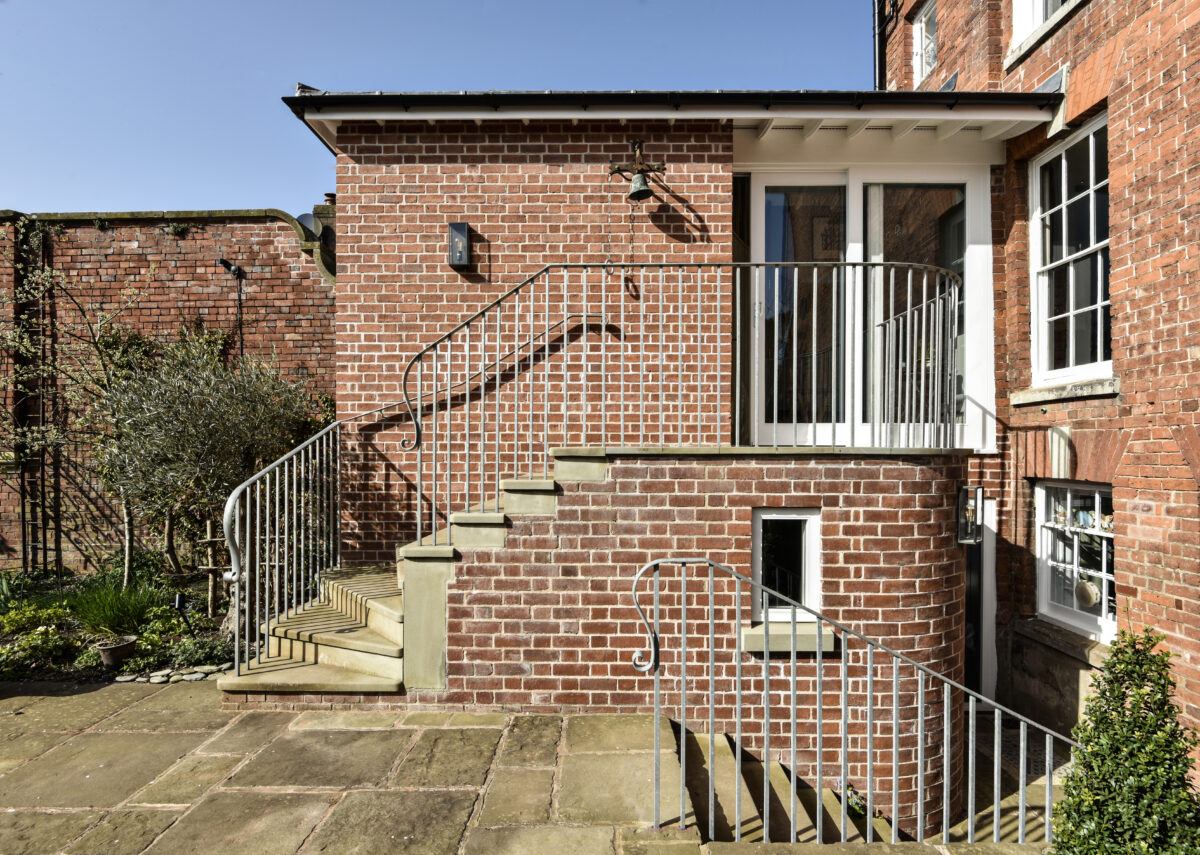 The Solution
The Solution
As we analysed the requirements and assessed possible solutions we were acutely aware of the need to develop a sensitive design that gave our clients the accommodation they needed in a way that was in keeping with the significance of the Georgian building.
The solution lay in removing a slightly tired porch that had been added to the property during the Victorian period. It had external steps from the garden and provided an entrance to the kitchen at ground floor level. Its design was not in keeping with the rest of the house, it was reaching the end of its life and its construction was causing damp issues in the original cellar.
Our scheme proposed removing the porch and replacing it with a two storey extension that had a somewhat larger footprint.
At ground floor level it would have a downstairs lavatory and shower room as well as indoor and outdoor seating areas where our clients could enjoy views of their garden. The southern aspect of the addition would also bring extra light into the kitchen.
At cellar and garden level it would allow the addition of extra storage space, a seating area and cupboards for coats and boots as well as a better arrangement of laundry, lavatory, Belfast sink and other space.
The extension would have external steps constructed from Forest of Dean stone to provide an elegant connection to and from the garden. An open vaulted ceiling would echo the established aesthetic of the Victorian porch externally and add a distinctive design detail internally.
As a listed building in a conservation area, the scheme needed both planning permission and listed building consent. We worked closely with Herefordshire Council Conservation Department before submitting a formal request for planning permission. This ensured our proposals were consistent with current policies and more likely to receive support.
This careful preparation meant permission was secured at the first attempt and we moved to Stage Two of our process. This involves meticulously detailing the design to prepare a schedule of works to go out for tender to building contractors. It is a very useful exercise, especially when working on older buildings such as this one where walls and floors may not be consistently level or straight. As it did in this project, the process allows us to identify and resolve most such issues before the build stage, where they could prove costly.
Our clients lived on site during Stage Three, the build stage. This took longer than expected for several reasons. One was due to difficulties sourcing building materials. A bigger factor was discovering an old well while digging the foundations for the extension. In order to conserve this historic find, we worked with our clients and the contractors to amend our design to restore and incorporate the well. Despite the delays, our clients were consistently impressed with the skills of the people who worked on their home.
“The workmen were excellent with outstanding craftsmanship and knowledge.”

The Outcome
Our clients are delighted with the alterations to their home, describing them as “beautiful”.
“The curve is a beautiful design detail. You can also see the influence of Alex’s church reordering work in our vaulted ceiling.”
They appreciate the practical design details. They now have a downstairs lavatory for their guests and for themselves. The shower room means they will be able to live on the ground floor of their home in the future if they need to. We used underfloor heating to warm the small space without bulky radiators and our clients describe it as a “revelation”.
They also appreciate the aesthetic design details such as the curved wall on a corner of the extension and the open vaulted ceiling at ground floor level.
Reflecting on the project, they are pleased that they have created a beautiful space that works for them.
“Our friends always admire the space and we do too.”

